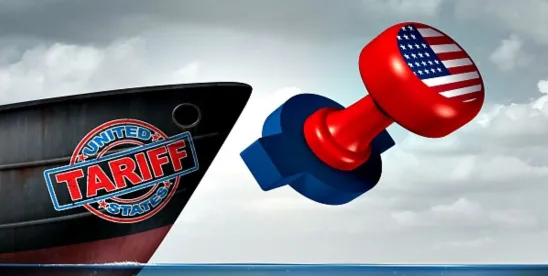On May 14, 2024, the White House and the Office of the United States Trade Representative (USTR) announced that U.S. tariffs on imports from China will remain in place and that certain new tariffs (see below) will be imposed, as USTR published its report following a four-year review of the Section 301 tariffs. According to U.S. Trade Representative Katherine Tai, “[a]fter thorough review of the statutory report on Section 301 tariffs, and having considered my advice, President Biden is directing me to take further action to encourage the elimination of the People’s Republic of China’s unfair technology transfer-related policies and practices that continue to burden U.S. commerce and harm American workers and businesses.”
The increased tariffs will cover about $18 billion worth of imports, while the overall Section 301 action covers roughly $350 billion worth of goods. The May 14 announcement comes after USTR concluded a larger review of the tariffs on Chinese-made goods and whether the tariffs continue to be beneficial to U.S. industry, including whether certain exclusions should be extended again (see January 2024 GT Alert).
Specific Tariff Increases
In USTR’s report, Ambassador Tai announced that she will propose to add and/or increase tariffs for certain specific products, including those in strategic sectors such as semiconductors and electric vehicles. These increased tariffs will be added on top of both existing General tariffs for the items under the Harmonized Tariff Schedule of the United States and any already existing additional Section 301 tariffs.
The following is a list of the proposed tariff modifications on specific products:
| Battery parts (non-lithium-ion batteries) | Increase rate from 7.5% to 25% in 2024 |
| Electric vehicles | Increase rate from 25% to 100% in 2024 |
| Facemasks | Increase rate from 0-7.5% to 25% in 2024 |
| Lithium-ion electrical vehicle batteries | Increase rate from 7.5% to 25% in 2024 |
| Lithium-ion non-electrical vehicle batteries | Increase rate from 7.5% to 25% in 2026 |
| Medical gloves | Increase rate from 7.5% to 25% in 2026 |
| Natural graphite | Increase rate from 0% to 25% in 2026 |
| Other critical minerals | Increase rate from 0% to 25% in 2024 |
| Permanent magnets | Increase rate from 0% to 25% in 2026 |
| Semiconductors | Increase rate from 25% to 50% in 2025 |
| Ship to shore cranes | Increase rate from 0% to 25% in 2024 |
| Solar cells (whether or not assembled into modules) | Increase rate from 25% to 50% in 2024 |
| Steel and aluminum products | Increase rate from 0-7.5% to 25% in 2024 |
| Syringes and needles | Increase rate from 0% to 50% in 2024 |
The report does not provide exact dates on when the product-specific exclusions will become operative or when the tariffs will expire. However, it does make recommendations for creating a limited exclusion process aimed at machinery used in domestic manufacturing, including proposals for 19 exclusions for certain solar manufacturing equipment.1 Further, the Report proposes providing additional funding to United States Customs and Border Protection for greater enforcement of Section 301, and will continue to assess approaches to enhance U.S. supply chain resilience.
According to the report, USTR will soon issue a Federal Register notice announcing procedures for interested parties to comment on the proposed tariff modifications, in addition to providing information on an exclusion process for machinery used in domestic manufacturing.
Effect on Current Section 301 Exclusions
USTR has not yet addressed the existing Section 301 exclusions, but it may issue a Federal Register notice on this issue shortly.
Key Takeaways
The May 14 announcement signals that the Biden administration remains committed to addressing what it sees as harmful practices by the Chinese government that burden U.S. commerce and diminish domestic production capabilities. In stark contrast, in the most recent public comment period many U.S. stakeholders noted that the Section 301 tariffs have placed an increased burden on U.S. parties, which they stated resulted in greater expense to U.S. manufacturers and consumers. Notwithstanding these comments, the tariffs appear likely to remain in place for the foreseeable future.





 />i
/>i

